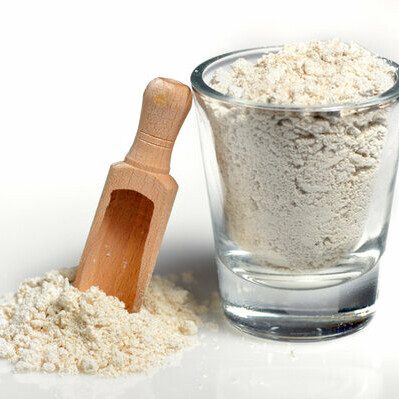
Colloidal Oat Flour
Also known as colloidal oatmeal
What is Colloidal Oat Flour?
Colloidal oat flour is an oatmeal that has been finely ground to form a powder so it can readily absorb water. Its mean particle size ranges from 20 to 50 µm with a uniquely narrow particle size distribution compared to other commercial cereal flours (50 to 500 micron).
Average particle size of oat flour polymeric components:1,2
- Oat starch granules → 3–15 μm long with a diameter range of 1.9–2.4 μm
- Fiber (cellulose, hemicellulose and lignin) → 80 µm long with a thickness of 20 µm
- Oat storage proteins (predominantly globulins) → Varies from 40 to more than 100 µm
Colloidal oat flour can also be made at home by using a food processor, blender or coffee grinder. The best way to test colloidal oatmeal quality is by mixing it with water and checking its dispersibility and solubility. The water–flour solution should quickly turn into a milky white liquid.
Origin
Colloidal oat flour is quite a common ingredient in cosmetic products. Historically, oatmeal has been used in facial masks and in bath oils as a soap replacement to obtain relief from skin irritations. Research suggests that oats exhibit hypoallergenic properties and leave a protective film on the skin, from the colloidal properties of either beta-glucan or oat oil.2
A ruling by the FDA acknowledged colloidal oatmeal and bioactive components extracted from oats that can be used as an active ingredient in formulations for treatment of itching, pain, and redness associated with minor skin irritations caused by insect bites, poison ivy/oak/sumac, and allergies.2
Function
Like any other cereal flour, colloidal oat flour provides starch functionality and brings benefits to food products thanks to its nutritional value. In baker products, colloidal oat flour may perform as a:
- Bulking agent in cookies
- All-purpose flour replacer in cookie recipes
- Nutrition profile enhancer
Nutrition and health
The health benefits of oats can be attributed largely to their unique chemistry and nutrient profile. Compared to other whole grains such as corn, wheat, and rice, oat-based products’ nutritional profiles are uniquely “complete” across many constituents, ranging from macronutrients, like dietary fiber to micronutrients such as phytochemicals and bioactive compounds.1,2
On a 100 g basis, oats are a significant source of dietary fiber, mostly soluble fiber such as β-glucan, thiamin, folate, iron, magnesium, copper, and zinc. Additionally, oats are an excellent source of potassium and are low in sodium, with a Na:K ratio less than one.
Application
Colloidal oat flour is naturally high in protein (non-gluten forming) and lipids. Compared to wheat, oats contain 33% more protein, nearly four times more fat, and less starch. Advances in nutritional science and increased consumer interest in functional foods have stimulated interest in new product development and oat fractionation. Oat components such as protein and antioxidants can be used as stabilizers, emulsifiers, and food extenders in industrial food processes.
- Baby food
- Granola bars
- Bread
- Biscuits and cookies
- Non-food uses, cosmetics (face cleansers, washes, bath products, creams, lotions, shampoos and shaving gels)
Oat flour, either finely ground or coarse, can be added to numerous food products, such as nutritionally-enhanced muffins, doughnuts, cookies and bread products. Food companies often develop healthy products having oats as a cornerstone.
Given its processing methods, colloidal oat flour may have a very high amount of damaged starch. This could increase the risk of excessive enzymatic breakdown during dough fermentation in case it is added to yeast-leavened doughs. Another issue could involve excessive stickiness in case amylases are added at too high doses. Bake testing is always recommended when formulating with very fine cereal flours.
References
- Arendt, E.K., and Zannini, E. “Oats.” Cereal grains for the food and beverage industries, Woodhead Publishing Limited, 2013, pp. 243–282.
- Webster, F.H., and Wood, P.J. Oats Chemistry and Technology, 2nd edition, AACC International, Inc., 2011.

